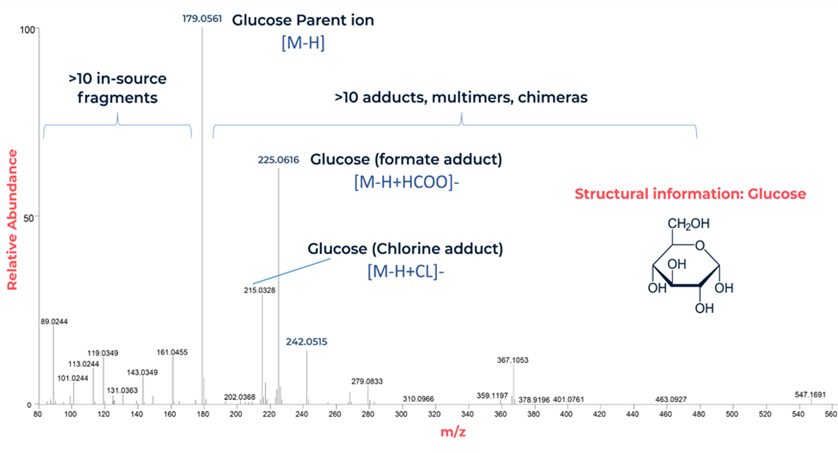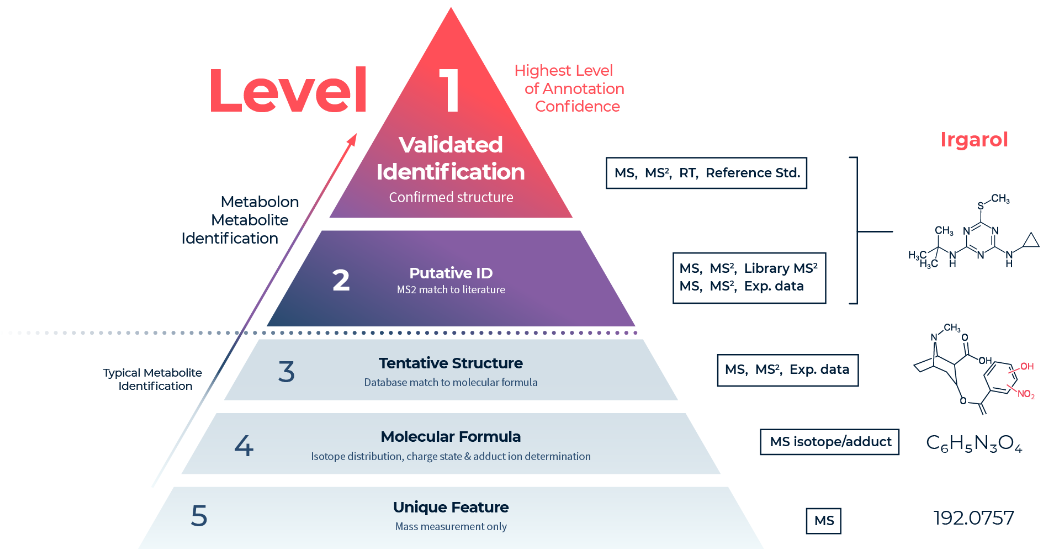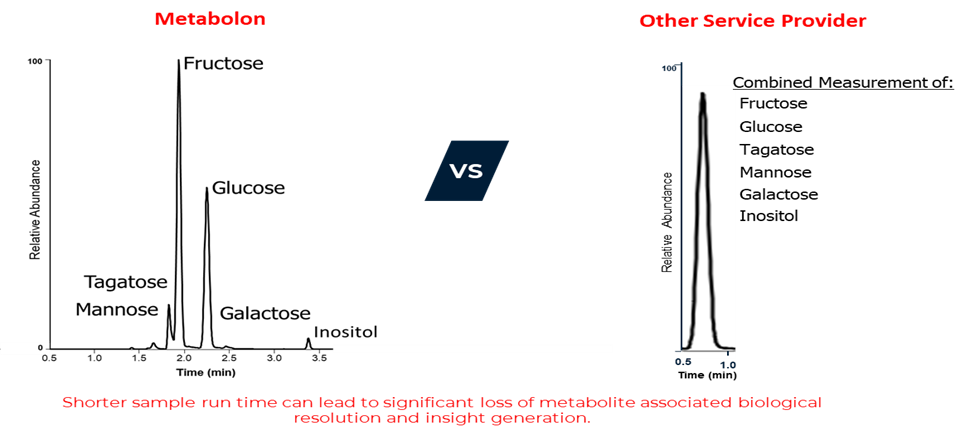I recently had the pleasure of attending my first annual 2023 Metabolomics Society meeting. The event was a “meeting of the minds” for practitioners of metabolomics, exploring metabolomic applications across various aspects of life—from health, wellness, and diseases to the environment and more. The plenary sessions, symposiums, and poster presentations highlighted the use of metabolomics, either stand-alone or in conjunction with other omics fields, to uncover novel insights. Some researchers had dedicated infrastructure, instruments, and expertise to generate their own data, while a vast majority relied on collaborations, institutional core facilities, or commercial vendors like Metabolon to provide metabolomics profiling as a service.
As I attended sessions and walked the event showroom floor, I kept coming back to the following question: What information should a scientist need, review, and consider before selecting a metabolomics service provider?
Unanimous in scientific investigation is the critical need to generate accurate data in support of an underlying hypothesis. In the case of metabolomic profiling, this involves considering the methods used to determine the accuracy of metabolite identification. Over the years, my primary focus has been obtaining the highest accuracy of the metabolites identified in a metabolomic profile. This pursuit mirrors our expectations for identifying genetic, transcript, or protein data profiles with high accuracy. I emphasize accuracy and depth of coverage—ensuring a substantial number of metabolites are accurately identified per sample is essential to glean biological insights. The decision to adopt a path forward is balanced with costs and turnaround times.
The accurate identification of a metabolite is dependent on matching sample spectral features to those of established standards with confirmed known structures. It’s important to note that the term features here is plural, reflecting the reality that a single chemical manifests multiple features within the spectral readout.

The figure above is a spectral representation of the multiple features associated with glucose and related small molecule metabolites that are typically identified in samples. These features resemble those found in the corresponding standard, like a fingerprint. Metabolites with well-established spectral features (glucose in this case) matching those of corresponding standards are considered to be of the highest quality of identification and worthy of being labeled as “Level 1” within the metabolomics community.1,2 Therefore, one of the most critical pieces of information to be reviewed by scientists interested in metabolomic profiling should be the number of Level 1 compounds listed in a provider’s library.
This is the crucial component, otherwise spectral matching based on external databases e.g., METLIN and others would be deemed acceptable for Level 1, but it is the matching against a batch of standards run on our methods that gets a metabolite to a Level 1 designation.

However, this is where the market becomes perplexing. Navigating the websites of metabolomic service providers can be a bewildering endeavor, given the myriad claims regarding their respective technologies and capabilities. Below is a table outlining library details from metabolomic service providers, culled from readily available information on their respective websites.
| Company | Turnaround Time | Library/Coverage | Metabolite Library Reported |
| Metabolon | 8-12 weeks | 5,600 | >5,400, ~85% Level 1, ~15% Level 2 |
| Company 1 | 2-6 weeks | 15k untargeted | >700, 15k basis is unclear |
| Company 2 | N/A | 175,000 | Not available |
| Company 3 | 4-8 weeks | 1,200 | 1,200 |
| Company 4 | 4-6 weeks | 1,250 | 1,250 |
| Company 5 | N/A | 250 | 39 of the 250 are clinically validated |
| Company 6 | Real-time | >1,000 | 1,019 |
A review of the minimal criteria for “accuracy of metabolite identification” within this list reveals the following: Metabolon leads the pack in delivering the most precise metabolite identification in sample sets of matrices tested. This superiority finds further affirmation in the company’s platform architecture, fine-tuned over 23 years of optimizing instrument parameters and chromatographic run times to achieve performance consensus that generates highly accurate and reproducible metabolomic profiling. The best evidence of the superiority of Metabolon’s platform is the 20+ years of high-impact, peer-reviewed publications where we have enabled our clients to make important biological discoveries with the data generated by Metabolon’s platform and services. Given this experience, it seems appropriate for us to provide a description of the details underlying accurate metabolite identification and key characteristics that a potential adopter needs to review prior to choosing a metabolomic services provider.
Metabolon routinely highlights its 5,400+ metabolite library as a measure of the accuracy of identification of metabolites in various matrices, corresponding to one of the largest reference libraries in the commercial space. Company 2, with claims of 700+ metabolites identified based on the availability of associated standards would be next best, with a significantly lower number of metabolites identified per sample. Companies 3 through 6 have various claims with variable information on the accuracy of the library list of metabolites provided by their respective technologies. A couple of companies above measure fewer metabolites with information on the chemical class described on their website.
A second factor a scientist considers when choosing a metabolomics service provider is turnaround time. Unfortunately, faster is not always better. Achieving consistent and reproducible accurate metabolite identification requires attention to multiple key parameters encompassing chromatographic and mass-spectrometric performances, among others. While faster run times might yield quicker results and reduced operational costs per sample, there’s a delicate balance. Pushing instruments to their limits for speed may compromise accuracy, as an excess of fragmented metabolites can congest spectral data, clouding the resolution needed for precise identification. Below is a great example using glucose to illustrate the differences in spectral features for the identification of glucose and related sugars associated with a 3 minute versus 1 minute run time.

Resolution of glucose and other related molecules, including fructose and galactose (sugars associated with different biochemistry and biological impact), requires an extended sample run time for resolution of their respective identification, an important characteristic lost when the same sample is subjected to short run time.
The third component to the choice equation is cost. I can’t get around the fact the fact that highly accurate data is associated with higher costs; thus, the decision between accuracy and cost per sample emerges as a pivotal aspect when reviewing data deliverables and claims, influencing the selection of a metabolomic service provider.
Most scientists (like myself) embark on a journey exploring biological insights that require years of investment in effort, time, and resources matched with passion and belief that the work undertaken will make a significant difference or have a major impact. Most scientific exploration does not end after a single experiment; rather, it takes years of sequential consolidation of scientific observation that can be tied together in a cohesive, compelling story that is completed and supported by strong scientific data. Data generated today most likely have a bearing on the scientific trajectory of tomorrow; thus, making a good decision on data generation today is critical for success tomorrow.
This write-up is an effort to provide points to consider or “food for thought” for those investigators interested in the use of metabolomics as part of their scientific toolkits to get insights from their respective scientific journeys. We live in an era with ready access to information for review prior to making informed decisions. However, as noted, insufficient data, inaccurate data, or lack of data clarity often makes it difficult to make informed decisions.
Metabolons’ technical and client services teams are always available to answer your questions about the use of metabolomics for scientific inquiry. Contact the team or reach out to me at [email protected]
References from MSI (Metabolomics Standard Initiative)
- Sumner, et al. Metabolomics (2007) 3:211-221.
- Schrimpe-Rutledge, et al. J. Am. Soc. Mass Spectro. (2016) 27:1897-1905.
Acknowledgement: I want to thank Drs. Brenan Durainayagam, Jean-Luc Chaubard, and Heino Heyman for the review, input, insights, and feedback in the development of this narrative, as well as Dr. Anne Evans for the simple yet informative images to highlight key points in this narrative.





